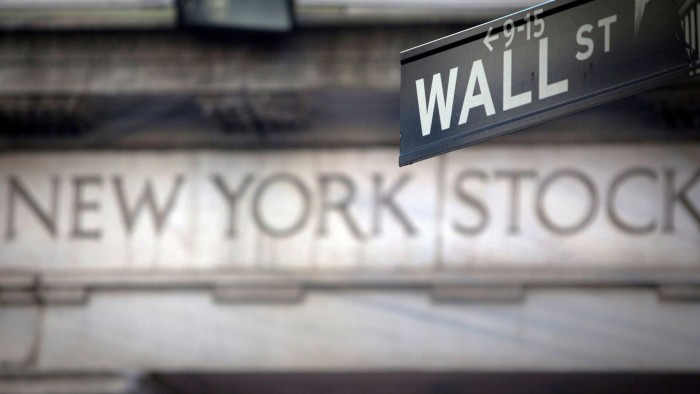Unlock the Editor’s Digest for free
Roula Khalaf, Editor of the FT, selects her favourite stories in this weekly newsletter.
Investors are warming to the S&P 500 index’s “forgotten 493” stocks, as stretched valuations and a sell-off in the AI sector trigger renewed warnings about outsized exposure to megacap companies.
The so-called Magnificent Seven US tech stocks dominate Wall Street’s blue-chip index and have carried it to record highs in recent years.
But this week the tech-heavy Nasdaq Composite index sold off on three consecutive days, prompted by worries over the future profitability of AI. Falls in some of the US market’s biggest, most heavily weighted names — Nvidia fell 3.5 per cent on one day — meant the S&P 500 was pulled lower, although so-called value stocks such as consumer staples, healthcare and utilities advanced at the same time.
“We’re seeing a bit of a rotation towards the forgotten 493,” said Damian McIntyre, head of multi-asset solutions at Federated Hermes. “The Magnificent Seven have rallied so much, it makes sense to take a breather here and reallocate.
“There’s a lot of nervousness around this AI spend,” McIntyre added, while “valuations are a lot more reasonable on the equal weight index”.

The S&P 500 index is weighted by market capitalisation, meaning the biggest stocks have an outsized impact on index-wide moves, which has grown as megacap tech stocks have soared in recent years. Concentration in the S&P 500 is at historic highs, with the biggest 10 stocks now making up 40 per cent of the value of the index.
Concerns about overexposure to a handful of big stocks led some investors to allocate instead to equal weighted funds, in which the smallest stocks are given the same weight as the biggest, limiting investors’ vulnerability to a sell-off in the largest companies.
But this equal weighted approach has badly lagged the main index in recent years and the performance gap between the two has grown to its biggest since 2003. That had caused investors to pull money out of funds like Invesco’s S&P 500 Equal Weight ETF.

In the past two weeks, however, the equal-weighted index has beaten the size-weighted index as some of the biggest names have suffered.
High valuations mean that “it looks attractive to go into the equal weighted index, shying away a bit from the tech space — or at least leaving it on the side for the time being,” said Wolf von Rotberg, equity strategist at J. Safra Sarasin Sustainable Asset Management.

Savita Subramanian, head of US equity and quantitative strategy at Bank of America, said she was bullish on the equal-weighted S&P 500 relative to the size-weighted index, partly because of stretched valuations in the biggest names.
“I would be shocked to see as much multiple expansion [in big tech stocks] from here as we’ve seen so far,” she said. At the same time, she pointed out that growing capital spending by the big AI firms could translate into a broadening out of the market rally, as sectors such as manufacturing start to enjoy the benefits.
“Suddenly you’ve got tech companies spending hundreds of billions of capex, and some of that goes to manufacturing,” said Subramanian. “That could impair megacap tech, and help the broader market. As you see that grow out into other areas, that might benefit the equal weighted index.”

As well as carrying a huge chunk of total value, the index’s biggest stocks are currently responsible for a record proportion of the index’s risk, as measured using volatility.
This is largely due to the biggest stocks today — such as Nvidia or Tesla — being more volatile than the megacap stocks of the past, such as banks or energy companies, said Laurent De Greef, head of portfolio strategy at D.E. Shaw Investment Management.
Such risk can offer bigger returns when conditions are good, but leaves investors more exposed to a downturn in the biggest stocks.
“With heightened valuations you also get heightened downside. Now is the time to get more selective on these megacap winners,” said Arun Sai, multi-asset portfolio manager at Pictet Asset Management.
“Equal-weighted exposure is a great way to hedge your bets in terms of where the current [economic] cycle is going.”
https://www.ft.com/content/9312c8f0-f7ab-4961-b008-5a7885edce7d


